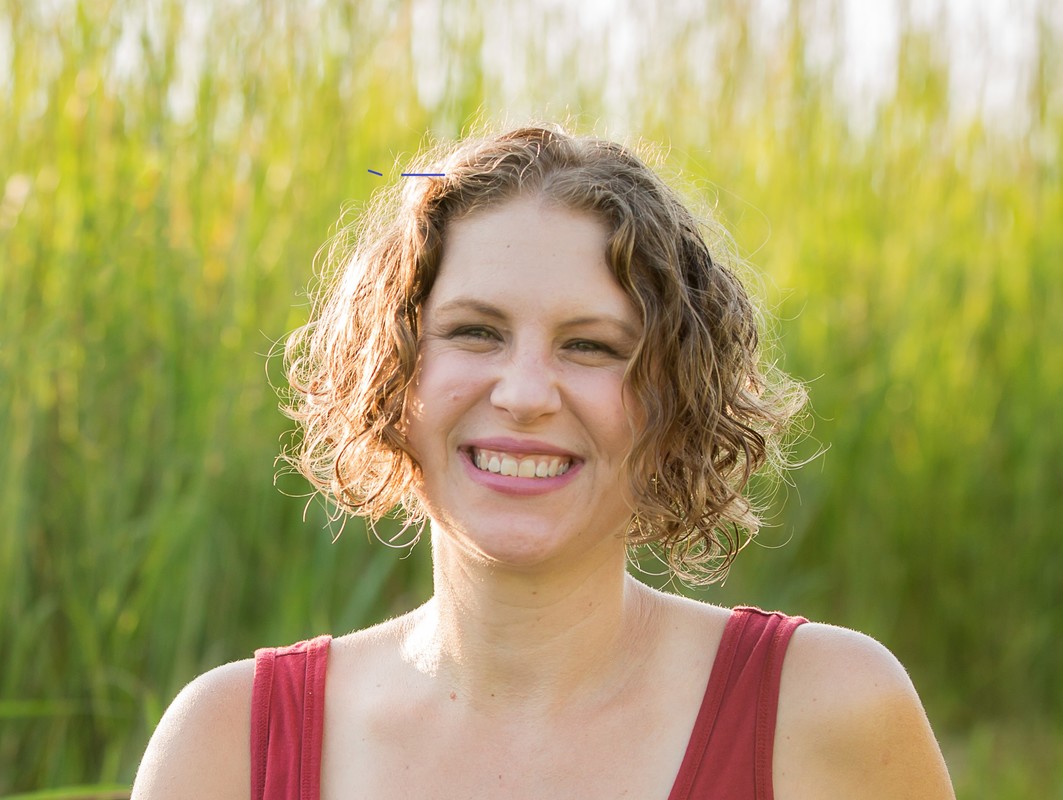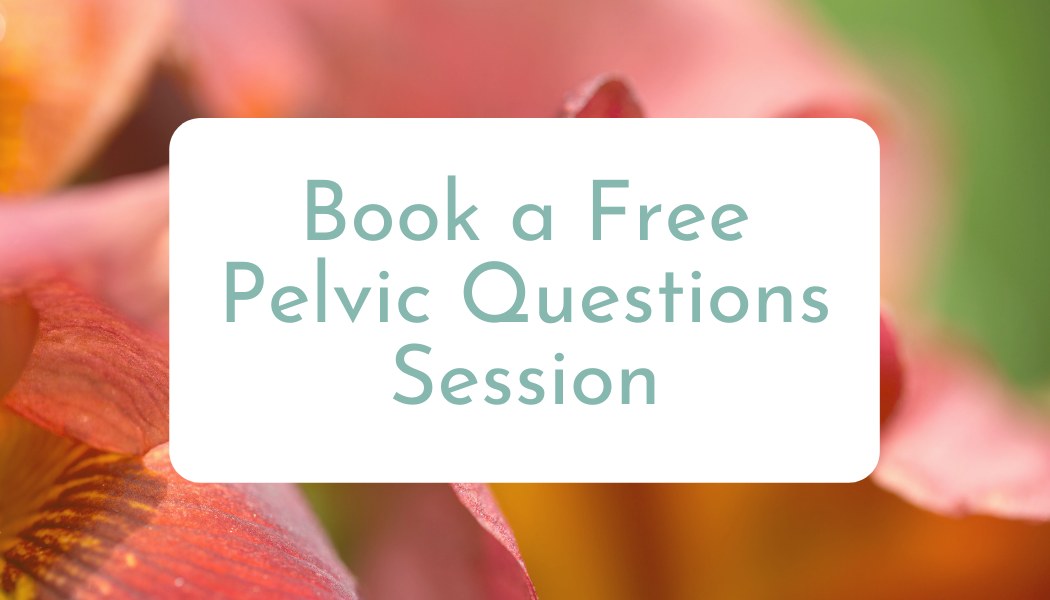Season 2 Episode 11 TranscriptToday I'm going to teach you how to breathe with your rib cage. Here's what we're going to do:
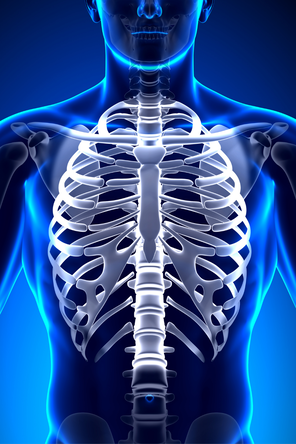
And if they're not comfortable, if the shoulders can't be down, then grab yourself a belt, or maybe the belt off your robe, or that Ace bandage or yoga strap or something, and wrap that around your rib cage instead. If you've got a strap around your ribs, I want you to hold it snug against your ribs but not overly tight, not restrictive.
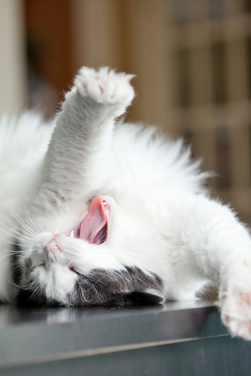
We tend to walk around with the rib cage thrust out forward, I talked about that in last week's episode about that “boobs out belly in” position. A yawn is one of the simplest ways to relax your rib cage back down into alignment, so that your ears, your shoulders, your ribs, and your hips are all stacked on top of each other, instead of that rib cage being thrust forward, of that line. So if you need to you on a couple of times, take a couple of big breaths and just let them out, and the ribs drop and the shoulders drop. 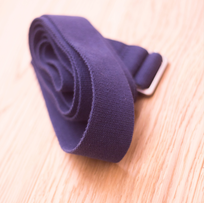
So, when those ribs come back down and stop straining forward, the rib cage gets some flexibility, right there at your spine, which can feel really yummy, but it also might feel really weird in the beginning. So don't go too strong into this. We're not trying to force anything. We're just trying to take nice even breaths, feeling the rib cage, expand. This is a thoracic breath. 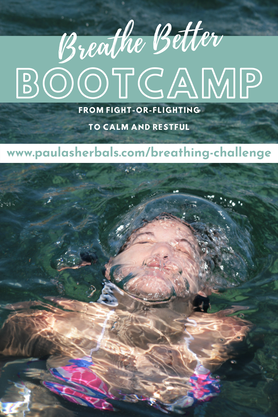 It's going to help take pressure out of your pelvic floor. It's going to help you take a nice deep breath, which leads into all the things you want breath work for: stress, anxiety, mindfulness, lifestyle. If you speak if you play an instrument, if you sing, if you have any manual hobbies, like gardening, like even exercising, being able to take a full breath, super helpful, I promise! This is going to be the breath that we are trying to create, this thoracic breathing, this movement in your rib cage, in the breathing challenge, it's going to start next week. So look out for that on my website, get on my email list if you're not so that you can join the challenge. It is free. It's just a five day challenge teeny tiny steps, couple of minutes every day to just watch a video and listen to me and then practice when you can. It's not going to be a gigantic investment of your time, but it is going to require some concentration and little practices throughout the day, so that at the end of the week, you are breathing better. All of this is going to be super helpful, super important, and it should feel really good. I hope to see you in the challenge! Sign Up Here Listen to the pod
0 Comments
There are all kinds of Herbal Medicine makers out there. Let's support them! This is NOT an exhaustive list, and I will be adding to it. Please send your recommendations or drop them in the comments below. Donation RequestsHigh Garden Tea- their Memphis TN shop was completely destroyed by a tornado in early March 2020
The Botanical Bus- a bilingual mobile herb clinic in CA Bay Herbalism- a free holistic and mobile health clinic in Sonoma County CA Commonweath Herbs Free Clinic- in Brookline MA Rootwork Herbals' People's Medicine Project- provides BIPOC a safe, experiential education in working with common plants to help heal themselves and their communities I’ve been hearing lots of misinformation about essential oils lately. Some is simple lack of knowledge, and some is scary to me.
Recently, I was talking with someone (who?? I can’t remember! I’m sorry, but thanks for the topic inspiration!) Anyway, we were discussing essential oils, I think the person was using them on the skin. In the conversation that followed, it turned out that this person had been advised (“it said”, so the bottle’s instructions? A pamphlet?) to use another liquid like water to dilute the EO. HOLD THE PHONE. Nowhere in this universe does water dilute oil. Ever heard the phrase, they go together like oil and water? There’s a reason for that! They DON’T. Essential oils are extracted by steam distillation. Plant matter is put in a still, heat is applied and steam rises into a cooling coil- hey, detailists, this is the simple version! So, the steam cools and the water (this is a “flower water”) dumps into a container, while the oil-based fragrance parts of the plant separates from the water and voila! Essential oil drips into a separate container. You can see essential oils when you peel an orange in the sunlight- bend the peel backwards and look for a fine mist to spray from it. That’s the EO, and why you will smell oranges right away. Contrast that with vegetable oils, from nuts and seeds like Olive, Avocado, Coconut and all the other oils you can buy more cheaply (relatively) and in quantity. They are squished under lots of pressure to expel the oil, which is strained out and bottled. Both methods can produce oils of varying quality, and both can use synthetic chemicals to improve yield. And it’s tough to locate and trust good suppliers of oils. There was a big olive oil scandal a few years ago, where different companies were analyzed and it was determined that many, if not most, of the readily available olive oils were not what they claimed to be. By the same token, essential oils can be adulterated with synthetic chemicals or outright be synthetic themselves- remember, you get what you pay for. Orange EO is plentiful. However, it takes 40-60 Roses to make a single drop of its EO, so is MUCH more expensive. Are you confused about essential oils vs regular/vegetable/cooking oils? How can you keep the two types of oil clear in your head, you wonder? Easy! Booze! Hard liquor is made in much the same way as EOs, with distillation of a mash. And like EOs, hard liquor is more costly, usually purchased in smaller quantities, and lasts a long time. Vegetable oils are pressed like cider apples. Both produce large quantities, are cheap to get compared to liquor/EOs, and go bad if not properly stored. True, some methods of going bad produce hard cider (yum!) whereas bad vegetable oils are rancid and nothing good comes of that. But still. When trying to remember which oil is which, think "Liquor or Cider?" All this makes the point that Essential Oils really are oil, and do NOT dilute in water. I was recently talking with a nurse friend of mine (I remember who that is! Hi L!) She was telling a story about a hospice patient she had- the family had been taken in by one of the big EO multilevel marketing companies, who push EOs in all sorts of applications and just got censured by the government for blatantly suggesting unsafe usage. You know the ones? Well, the family was feeding my friend’s patient a mix of essential oils that had been promised to cure him, IN A GLASS OF WATER. She said there was a thick layer of oil sitting on top of the water, and she was horrified to imagine how it burned the patient’s mouth and throat and esophagus and stomach and intestines, but there was nothing she could do. The family was convinced this was the cure and their ‘consultant’ had told them so. If you’re not familiar with using essential oils, if you're not sure why drinking EOs is horrifying, just follow this simple guideline: ALWAYS DILUTE Think of liquor- if you’re not used to drinking it, start with mixed drinks, not a straight glass of bourbon. Some EOs are perfectly safe neat- that is, directly on the skin. Some are even safe internally. But if you don’t already know which ones, do more research and dilute them ALL for now. Many will cause burns, rashes, or other unpleasant or harmful reactions. These are super concentrated products. What does dilute Essential Oils? More oil. Those vegetable oils we discussed become what’s called ‘carrier oils’. You add a few drops of EO to a small amount of, say, jojoba oil, and you have a fabulous massage oil. Now to the point of this whole post, which came to me tonight in the bath- what if you want to use EOs in the tub? You can dilute them in more oil, but won’t they still just sit on top of the water? YES! Now you’re thinking! And imagine how you enter the tub, what delicate parts enter the water as you sit down. Ugh. You don’t want a dollop of concentrated oil, diluted or otherwise, sticking there. So what’s a bath fan to do? Here’s a more accurate rule to go by: DILUTE OR DISPERSE EOs will disperse in whole milk. There’s enough fat (read, OIL) in full fat milk that whisking in a few drops of EO will break them up into tiny particles that will hang onto the milk fat particles, preventing EO burns. You can also use salt (sea, pink, Epsom…) Put salt in a bowl, add a few drops of EO, and mash it all together really well. Something about the chemical structure of the crystals and the oil, I don’t know, there’s chemistry involved, but it works with sugar too. Then add the whole thing to the tub. That’s it! Use EOs safely by remembering to DILUTE OR DISPERSE them, and go take a long soak in a deep tub.
DIY Microderm Abrasion1 large tablespoon softened (not liquid) Coconut Oil
1 large tablespoon Baking Soda 1-3 drops Carrot Seed essential oil, optional 3-5 drops Lavender essential oil, optional Blend together in a glass or ceramic bowl- wood or plastic will absorb oils. When you have a smooth paste, gently apply to skin. Exfoliate your face at the bathroom mirror, avoiding extra delicate eye and lip skin. Then step into your shower or tub and exfoliate arms and legs. If your shower is like mine, carefully step back out, being sure not to slip, and start your shower water. Once water temperature is adjusted, re-enter and shower away. The floor will be SLIPPERY so move carefully, and consider bringing a scrub brush with you. Once you've washed off your coconut oil/baking soda, take a minute with a squirt of soap to scrub the floor and the soles of your feet. Voila! Your skin is baby-butt-smooth, your shower is clean, and you're ready to take on anything. Happy day, Beautiful Introvert! Burn yourself? Put Lavender essential oil on it.
There, that's all you need to know. Now go and impress your family and friends, bakers and pizza makers, the clumsy and the accident prone. Really! That's all there is to it! Recently a friend was over for lunch, and the poor soul grabbed the lid of a pan that just came out of a 400 degree oven. Adding to the pain, they valiantly found a safe place to deposit the glass topper instead of dropping it on the floor, risking both lid and linoleum. While they ran for the cold water faucet, I ran for my essential oil tray. Several drops applied directly to the red skin, and again after lunch as we said our goodbyes, and my friend went home. The next day I called to check in. "How is EVERYONE not talking about this? Why don't they all know?? It's incredible!" No blister, no pain, and fast healing. Lavender is an analgesic- it takes away pain. It's also cooling, and stimulates cell regeneration to speed repair. That's a perfect trifecta for a burn remedy. I've used it many times, most often on myself, and always to great effect. 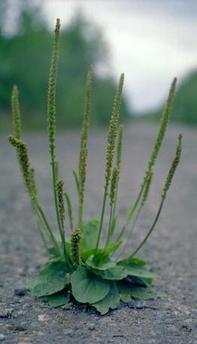 Broad-leafed Plantain Broad-leafed Plantain Today I started a project I’ve been dreading, and it really wasn’t all that bad! I love it when that happens. Plantago is a super common lawn and garden ‘weed’, commonly known as Plantain. But not like the banana! It comes in 2 types around here, P. major or the Broad Leaf variety, and P. lanceolata or Narrow Leaf. Believe me, you’ve seen this plant. P. lanceolata has an annoying little stalk with a cone-shaped head on it, which produces tiny flowers. This stalk is very tough and very flexible- it bends double when the lawnmower pushes on it, and springs back up once the blades are past. Hence, it is a bane for ‘perfect lawn’ people. P. major also has a stalk, but this one produces flowers along the length of it. Last year I cultivated this wild plant in my garden, weeding around certain plants and encouraging them to grow big and lush. This year the flower stalks were huge- some grew 6 inches long or more. After they flowered, they started producing seeds. The seed pods started out small and green, and as they matured turned a dusky purple. Once most of the stalk was purple, I harvested it near the ground. Many of the stalks were beginning to turn brown where they joined the leaves at the basal rosette when I harvested. The stalks were left to dry on a sheet of paper to catch seeds, then I stripped them into a jar. I just stuck the stalk upside down in a jar, pinched the end of it with my fingers and pulled to ‘strip’ off the seeds and their husks. This is where the project sat for the last few months. There was a lot of husks and chaff in the jar, and I don’t have seed screens. How was I going to separate them? Finally today, I sat down with some tools. In the end, this is what worked the best- and it was easy too! First, a spoonful of seeds and husks went into a wire strainer with a large-ish mesh. That was over a metal bowl, and I shook it to separate the loose seeds. Then that spoonful went into a mortar. I used a clay one with grooves and a wooden pestle. A few turns and lots of seeds had been broken out of their pods, so it all went back into the strainer. Another grind or two and the strainer was full of empty seed husks, which I threw out. A spoonful at a time, the seeds were sifted into the metal bowl, along with a considerable amount of chaff. Then came the fun part. I took the bowl outside, shook it to settle the seeds and bring the chaff to the top, and very gently blew on the bowl. The chaff puffed up and blew away. I took a deep breath and blew in a steady stream, turning the bowl and disturbing the seeds, which curved up the sides of the bowl and fell back in. I got lots of chaff on my glasses and in my hair but it wasn’t in the bowl anymore! I got a little carried away and ended up blowing too hard and losing some of the seeds. Next time, I’ll remember to stay very gentle and let it take a little longer, and maybe use a deeper bowl. But now I have a half pint jar of Plantain seeds ready for eating! I’m going to sprinkle them on things like poppy seeds, and make a gomaiso-like blend with toasted Milk Thistle and Nettle and something else, maybe Thyme. Dulse would be good but I’m out… I read somewhere that these seeds are very high in B vitamins so I want to do some more research, but I’m pleased with my harvest. Why? WHY would I stop shampooing my hair?
Just for kicks, really! This past winter, I washed my hair about once a week. I have REALLY long hair. So washing it requires time to dry it, and air circulation, and since my default hairstyle is a quick bun I would often find it still very damp at the end of the day. I found myself washing on the weekend and letting it dry around the house or while driving for weekend plans, then tying it up again come Monday. I started thinking about why I keep it so long if I hardly ever wear it down or visible in any way. My hair is pretty, a dark blonde/light brown, wavy, and startlingly long to most people, including myself. It's also annoying, getting stuck on velcro, wool, fleece, and outside the car when I shut the door on a windy day. But I LIKE it long. I just don't like having to mess with it much. So I figured I had nothing to lose by trying out the No 'Poo system. And here's what I've found: Day 1: The baking soda rinse feels slippery, which is good since it's pH is basic (alkaline) and should be slippery (soap is basic too.) I wonder if I'm wasting too much of the rinse trying to get it on my hairline. Using a half pint mason jar- it's the right size, but I have visions of broken glass in my shower! The vinegar rinse made my wet hair feel so smooth! Dry, it's soft. And thick feeling. And it didn't get as knotty as usual! Many others online have reported that this is common the first time, but the next time felt really dry. We'll see. Day 2, 3: Ponytail, ponytail! And it looks nice! There's wave that's holding together, not getting frizzy or wild even against fleece, not as many loose strands falling all over the place, and the best part is I can brush it really easily at the end of the day. It's definitely smoother and less knotty. We Americans love our aggressive approach to health. Work out till you throw up! Do the Atkins diet until you're in ketoacidosis! Detox until you feel like death warmed over!
My friends, be gentle! You're an ecosystem, not a machine. A very common understanding of a detox is going in there with a crowbar and a pressure washer, and cleaning out your insides down to the studs. The difficulty is that the warehouses you're cleaning out, primarily your liver, also function as the gutters and sewage treatment plant for the waste products they once stored. When the floodgates open and the storage facility suddenly has to process what it so carefully packed away out of sight, the overflow of toxins and other wastes pour into your bloodstream and make your head foggy, your breath bad, your skin erupt, your kidneys stressed, and your digestion sluggish. How does it feel to air out your house, or your car? The windows open, the sun shining in, the dust blowing out. It's fresh, clean and very satisfying. When you think of detoxing, think of strengthening the avenues of elimination your body has for dealing with the waste products. Think also of eliminating them in manageable amounts. If your body is too busy de-storing, it can't properly get rid of everything and it may just get stored somewhere else. Another, more critical issue, is that the liver stores away things the body can't deal with, like chemicals and heavy metals. Aggressively emptying the liver exposes the rest of your organs and brain to these more serious wastes. How do you safely and easily detox, then? Think of it this way: Easy In, Easy Out. The act of digesting food makes the intestines, liver, kidneys, and other organs work. That's their job. Often, though, digestion is not their only job. For example, the liver produces bile to digest fats, it breaks down various chemicals in the blood like stress hormones into waste products, and it stores away both wastes it can't or doesn't have time to eliminate, and a reserve of glucose for energy between meals. Going easy on food gives these organs a break without shorting your brain on its fuel needs. Juice fasts are nice because fresh juices can contain antioxidants, helpful enzymes, some easy-access sugar and other great resources. Monodiets of foods like Indian kichari are very easy on the digestive system, use warming and supportive spices, and help rebuild depleted energy reserves. Fruit, teas, water, and well cooked vegetables are also easy on your system. Meat, dairy, fats, caffeine, sweets, sometimes even raw vegetables are harder to digest properly. Water is a HUGE part of the detox plan. Your blood is mostly water, which bathes every tiny bit of your body and picks up all sorts of waste products that your kidneys then filter out and mix with more water to create urine. Drinking plenty of water ensures that the filter process is quick and easy, and that the blood is always ready to clean the next place that needs it. Think of rinsing out the rag when wiping the counters- a dirty one won't pick up much more dirt. Water on the outside is very important as well. Your skin is the largest organ in your body, and is an elimination pathway. Bathing gets rid of dead skin cells that can block pores, especially through exfoliation with a stiff brush or loofah or even a good scrub with a wash cloth, and soaking can draw wastes out through the skin. Warm water also increases circulation, which increases the kidney action. A detox fast is a conscious action. When you go about your normal life, your body responds to that life. It digests what you give it, it provides energy to muscles and organs with the highest demand, it cleans up what it can in between. Fasting reduces the resources available for all these functions. This means you can't have the same expectations for your body during a fast that you would normally. Traditionally, fasts are often seen in religious practices that require simultaneous times of rest. Resting or taking it easy during a fast reduces the demands on your body so that it can rebuild. Imagine the items you could check off the to-do list if your office shut down for a few days, or a week. You could patch the roof, paint the porch, plant a garden or fix that broken thing in the garage, and doing these things wouldn't drain you like doing them during your normal work schedule would- which is why you haven't done them yet! Similarly, allowing your body to rest gives it a chance to repair damage, replenish reserves, and restore balance. Your body does need to work, though, to keep you alive. There is a fine line between providing time for recuperation and fasting for so long that you end up using all the reserves you built in the first place. So how long to fast, then? Start with a day. Say, the first of the month. Or maybe the first Saturday, if that's a day off for you. Plan it out, decide what you'll eat and drink and when, what activities you'll do and what you'll avoid. Then pay attention. Are you more hungry than you thought, or snacky maybe because you're bored? More sluggish, or downright sleepy? Energized or alert? Next time, maybe next month, go for two or three days. You'll probably feel dramatic swings in yourself over that time. You can go from being on top of the world to having flu-like symptoms in a matter of hours. Remember, let your body tell you what you need. A great hot shower or long soak in the tub might be all it takes to get whatever made you feel crappy out of your system. Hot tea or cooling water and lemon might help too. Your mood might also swing widely as your energy levels dip during a fast. Be aware of this, and let others around you know what you're doing! I personally have found that Calcium-Magnesium supplements help balance my moods, so you may want to try that. A week is probably the longest you should fast at a time, if you can comfortably build up to it. If your body doesn't respond well or healthily, stop there. Maybe it's only going to work for four days this time, or maybe only one. You can fast yearly, seasonally, quarterly, monthly, or on whatever schedule resonates with you. Monthly is probably the most frequent interval that is safe and productive if you are fasting for more than a day at a time. I am remembering, though, a story in a Little House book about boys who went sledding on a Sunday, and the trouble they got in. Theirs was a community who took the weekly day of rest very seriously, and hardly even spoke for the whole day! There are two main points I want to repeat, because missing them is at the core of why many people I speak with are stressed, depleted and unhealthy: 1.) You are an ecosystem, not a machine and 2.) Easy In, Easy Out Be Well! |
Fun Fact: I'm an herbalist and a movement coach. Not a doctor, or a pharmacist, and not pretending to be one on TV.
This is a public space, so my writing reflects my experiences and I try to stay general enough so it might relate to you. This does not constitute medical advice, and I encourage you to discuss concerns with your doctor. Remember, however, that the final say in your wellness decisions are always yours- you have the power to choose, you are the boss of you. And, some of my posts may contain affiliate links. If you make a purchase through them I'll earn a few cents. Thank you for supporting my work. This website is provided for educational and informational purposes only and is not medical, mental health or healthcare advice. The information presented here is not intended to diagnose, treat, heal, cure or prevent any illness, medical condition or mental or emotional condition. Working with us is not a guarantee of any results. Paula Billig owns all copyrights to the materials presented here unless otherwise noted. Categories
All
Archives
July 2021
|
|
info @paulaswellness.com |
DisclaimerThis website is provided for educational and informational purposes only and is not medical, mental health or healthcare advice. The information presented here is not intended to diagnose, treat, heal, cure or prevent any illness, medical condition or mental or emotional condition. Working with us is not a guarantee of any results. Paula Billig owns all copyrights to the materials presented here unless otherwise noted. |

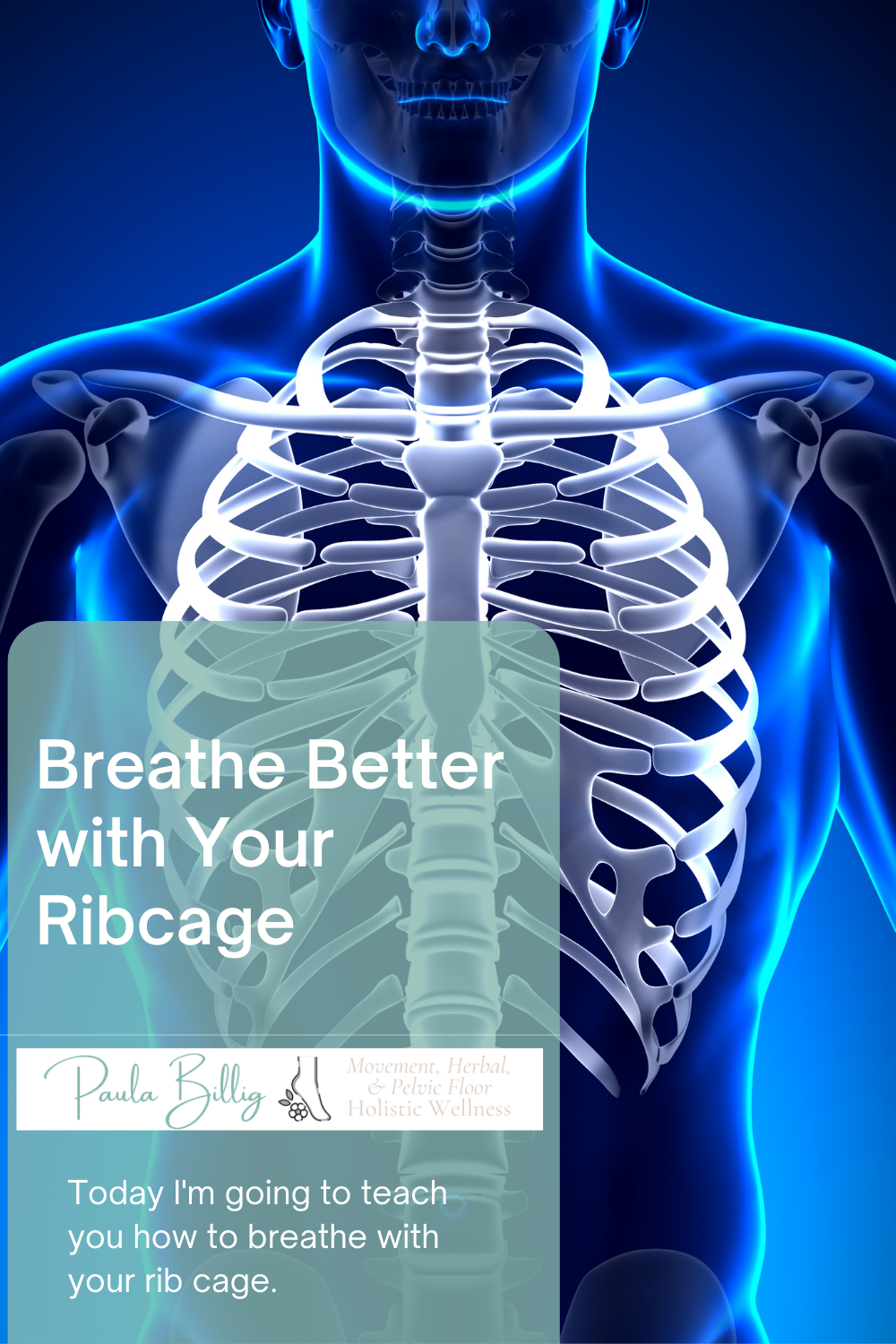
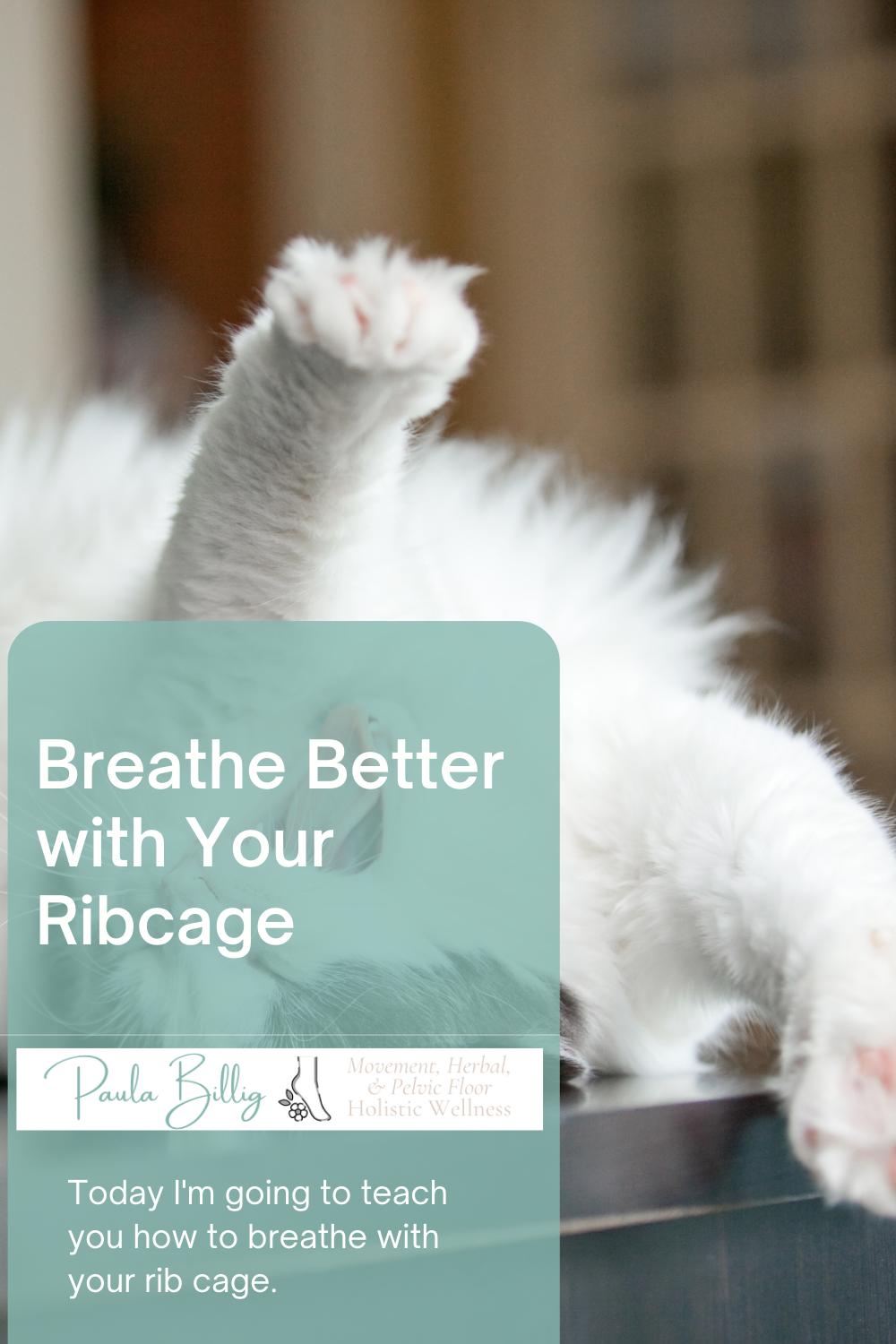
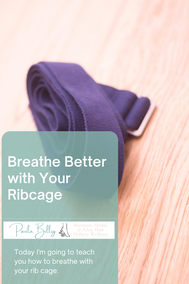
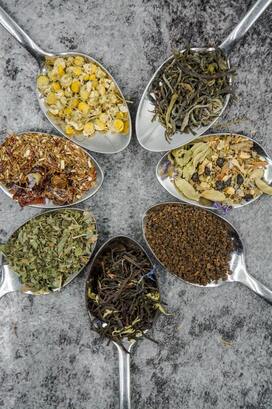
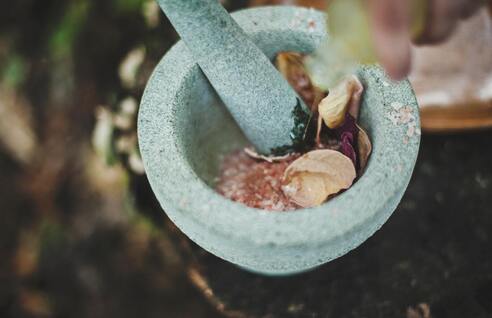
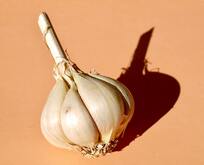

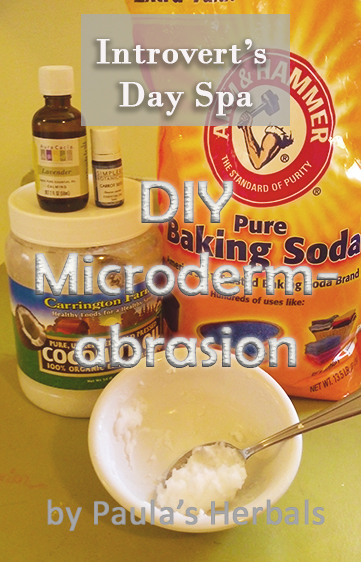
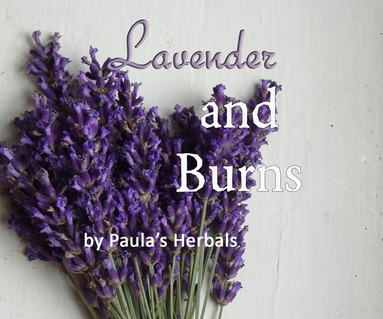
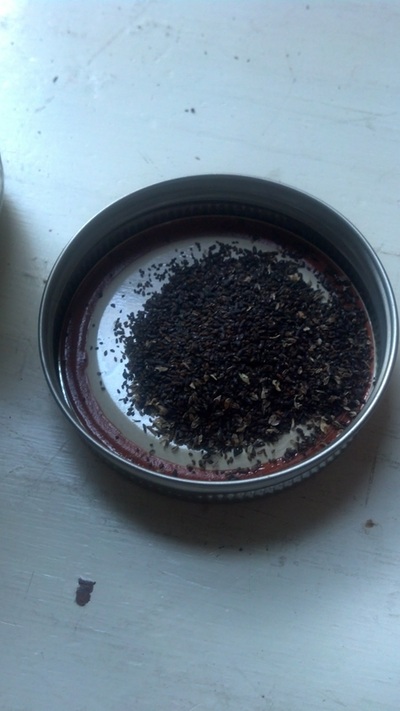
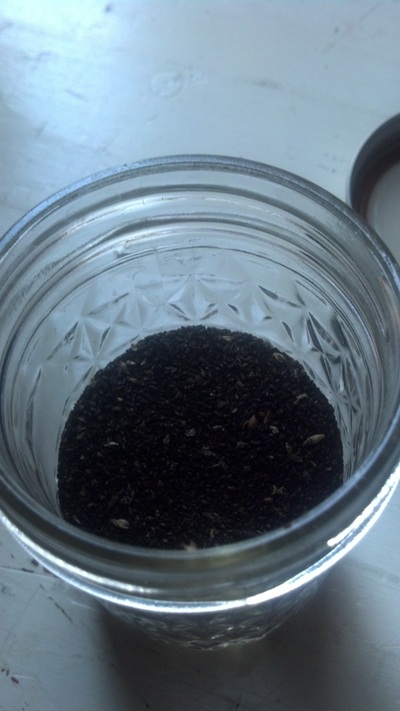
 RSS Feed
RSS Feed
